9 Famous Foods Of Uttar Pradesh
By: Priyanka Maheshwari Sat, 01 July 2023 4:34:35
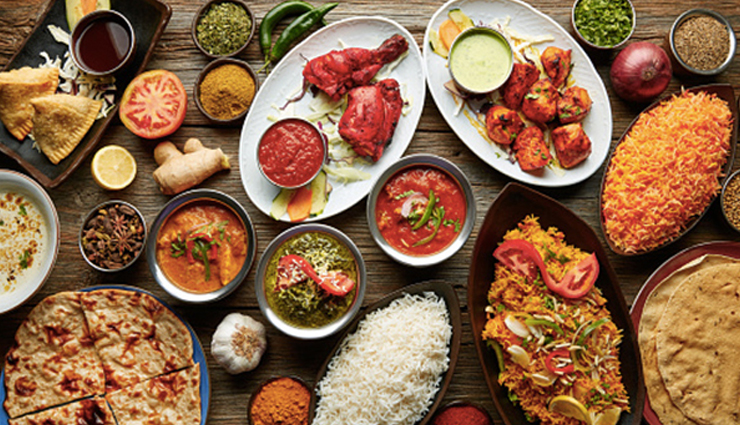
Uttar Pradesh, often referred to as the "Heartland of India," is a state located in the northern part of the country. It is the most populous state in India and is known for its rich history, diverse culture, and significant contributions to art, literature, and politics. Uttar Pradesh has a rich culinary heritage and is renowned for its delectable cuisine. The cuisine of Uttar Pradesh is a fusion of Mughlai, Awadhi, and traditional Indian flavors. It is known for its aromatic biryanis, succulent kebabs, mouthwatering sweets, and a variety of vegetarian and non-vegetarian delicacies. Famous dishes include Lucknowi Biryani, Tunde Kebab, Aloo Rasedar, and Petha uttar Pradesh offers a wide array of flavors that will leave any food lover craving for more. Let's take a look at 9 famous foods of Uttar Pradesh:

# Lucknowi Biryani
Lucknowi Biryani, also known as Awadhi Biryani, is a highly acclaimed and aromatic rice dish that originated in Lucknow. Lucknowi Biryani is a labor-intensive dish that requires meticulous preparation. It is traditionally made with long-grain basmati rice, meat (usually chicken or mutton), and a blend of aromatic spices. The rice and meat are cooked separately before being layered and slow-cooked in a sealed pot, a technique known as "dum" cooking. This method allows the flavors to infuse and the meat to become tender and succulent. The use of fragrant spices such as saffron, cardamom, cinnamon, cloves, and nutmeg adds a rich and aromatic touch to the dish. Additionally, a special ingredient in Lucknowi Biryani is "keora" or screwpine water, which enhances the flavor profile and gives it a unique floral note.
One of the hallmarks of Lucknowi Biryani is its layering technique. The partially cooked rice is layered with the cooked meat, caramelized onions, mint leaves, and saffron-infused milk. This layering creates a beautiful mosaic of flavors and colors, with each grain of rice infused with the essence of the spices and meat. Lucknowi Biryani comes in various forms, including chicken biryani, mutton biryani, and even vegetarian versions with vegetables or paneer (Indian cottage cheese). Each variation retains the essence of Lucknow's culinary heritage while offering a diverse range of options for different preferences.

# Tunde Kebab
Tunde Kebab is a legendary and iconic delicacy originating from the city of Lucknow in Uttar Pradesh. Tunde Kebab has an interesting history that dates back to the 19th century. It is believed to have been created by a one-armed chef named Haji Murad Ali, who was affectionately called "Tunde" (meaning 'handless' in Urdu). Despite his physical disability, Haji Murad Ali mastered the art of kebab-making and developed a recipe that would become legendary. Tunde Kebab is traditionally made with finely minced meat, typically lamb or beef, which is mixed with a secret blend of aromatic spices and seasonings. The key to its distinct taste lies in the use of over 160 spices, including cloves, cardamom, cinnamon, ginger, garlic, and a mix of powdered spices, all carefully selected and combined in precise proportions. The finely minced meat is blended with these spices and marinated for hours, allowing the flavors to infuse.
Tunde Kebab is typically served with a sprinkle of chaat masala, accompanied by mint chutney and onions. The kebabs are often enjoyed with roomali roti (thin bread) or sheermal (saffron-infused sweet bread) to balance the flavors and provide a delightful eating experience.
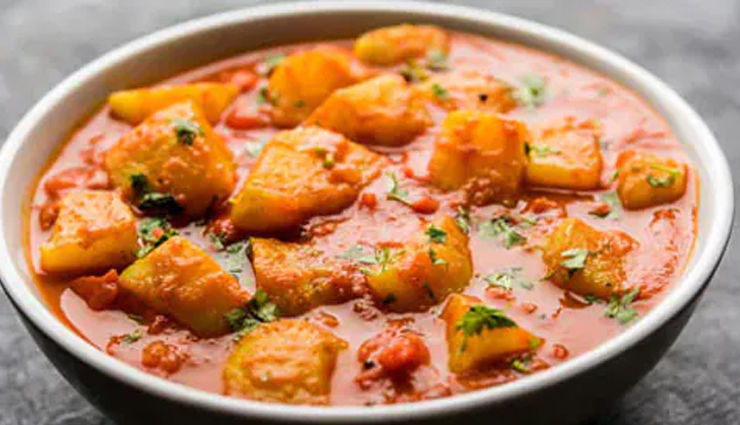
# Aloo Rasedar
Aloo Rasedar is a traditional and flavorful potato curry from the state of Uttar Pradesh. Aloo Rasedar is made with boiled potatoes that are cooked in a tangy and mildly spiced tomato-based gravy. The potatoes are typically cubed or roughly mashed, depending on personal preference. The gravy is prepared using a combination of tomatoes, onions, ginger, garlic, and a blend of spices such as cumin, coriander, turmeric, red chili powder, and garam masala. The use of traditional Indian spices adds a depth of flavor to the dish. To make Aloo Rasedar, the gravy is first prepared by sautéing onions, ginger, and garlic in oil until golden brown. Then, tomatoes are added and cooked until they soften and release their juices. The spices are added next, creating a fragrant base for the curry. Finally, the boiled potatoes are added to the gravy and simmered until they absorb the flavors and become tender.
Aloo Rasedar is typically served hot, accompanied by puris or parathas. It can also be enjoyed with rice or roti (wheat bread) as part of a main course meal. The soft and flavorful potatoes coated in the tangy gravy make for a satisfying and fulfilling dish.
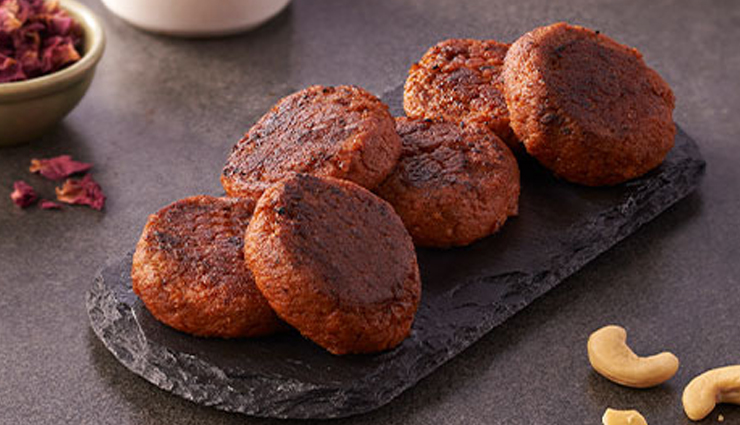
# Galouti Kebab
Galouti Kebab is a delectable and renowned culinary treasure hailing from the royal kitchens of Lucknow in Uttar Pradesh. Galouti Kebab, meaning "melt-in-the-mouth" kebab, was invented during the reign of the Nawabs of Awadh. It is said to have been created by the royal chefs for the aging Nawab Wajid Ali Shah, who had lost his teeth. The kebab was devised to be extremely tender and flavorful, allowing the Nawab to relish the meat effortlessly.
Galouti Kebab is traditionally made with finely minced meat, usually lamb or beef, which is marinated overnight in a blend of rich and aromatic spices. The key to its exceptional texture lies in the use of papaya or raw papaya paste as a meat tenderizer. The papaya enzymes help break down the proteins, resulting in a velvety smooth and tender kebab.
The marinated meat is mixed with a combination of fragrant spices such as cloves, cinnamon, cardamom, ginger, garlic, nutmeg, and a special blend of powdered spices known as the "Galouti masala." This masala mix is a closely guarded secret and varies from chef to chef, adding a unique flavor profile to the kebabs.
Galouti Kebabs are typically served with traditional Lucknowi or Awadhi accompaniments. They are often enjoyed with roomali roti (thin bread), ulte tawa ka paratha (layered bread), or as a part of the iconic Lucknowi Biryani. They are commonly served with mint chutney, onion rings, and lemon wedges for a burst of freshness.
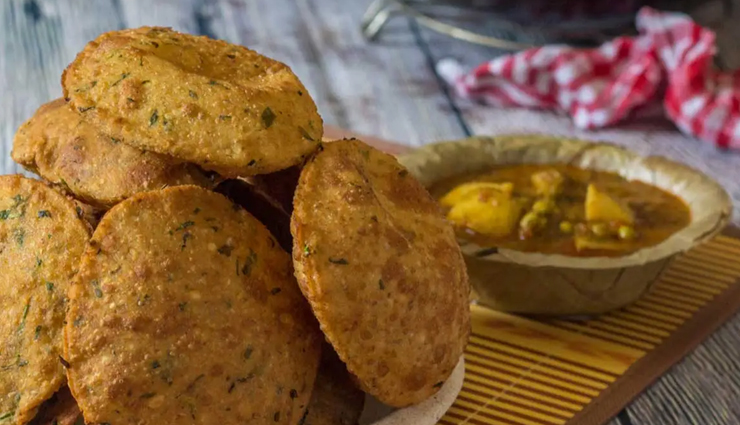
# Bedmi Puri with Aloo ki Sabzi
Bedmi Puri with Aloo ki Sabzi is a delightful combination of deep-fried lentil puris served with a flavorful potato curry. This classic Uttar Pradesh breakfast is loved for its hearty and satisfying flavors. Bedmi Puri is made from a dough prepared with soaked and ground urad dal (black lentils) mixed with wheat flour and a blend of aromatic spices. The dough is kneaded to a soft consistency and rolled into small puris. These puris are then deep-fried until they turn golden brown and become crispy. The addition of lentils gives the puris a unique texture and enhances their taste.
Aloo ki Sabzi is a delicious potato curry that complements the Bedmi Puris perfectly. It is made by cooking potatoes with a blend of spices such as cumin, turmeric, red chili powder, and garam masala. The curry is typically prepared in a tomato-onion base, creating a thick and flavorful gravy. It is garnished with fresh coriander leaves for added freshness. Bedmi Puri with Aloo ki Sabzi is traditionally served hot and enjoyed together. The puris are typically accompanied by a bowl of steaming hot aloo ki sabzi. Bedmi Puri with Aloo ki Sabzi is not only a delicious breakfast option but also a significant part of Uttar Pradesh's culinary heritage. The combination of the lentil puris and the comforting potato curry makes it a filling and satisfying meal. So, the next time you visit Uttar Pradesh or crave a flavorsome breakfast, don't miss out on experiencing the scrumptious Bedmi Puri with Aloo ki Sabzi.
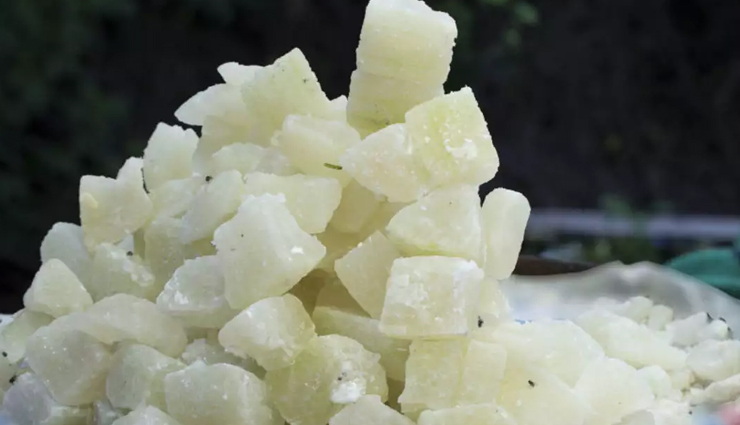
# Petha
Petha is a well-known and cherished sweet delicacy from the state of Uttar Pradesh. It is a translucent and soft candy made from the ash gourd, also known as winter melon or white pumpkin. Petha holds a special place in Uttar Pradesh's culinary culture and is synonymous with the city of Agra, where it originated. While the classic Petha is made with plain ash gourd and sugar syrup, there are several variations and flavors available. Some popular varieties include:
Angoori Petha: In this version, the ash gourd pieces are shaped like small grapes (angoor) and dipped in sugar syrup.
Kesar Petha: This variety is flavored with saffron, giving it a vibrant yellow color and a unique aroma.
Chocolate Petha: A modern twist on the traditional Petha, where the candy is coated or infused with chocolate, appealing to those with a sweet tooth.
Paan Petha: This version incorporates the flavors of paan (betel leaf) and is often garnished with dried rose petals and silver leaf for an added touch of elegance.
To make Petha, the ash gourd is peeled, deseeded, and cut into bite-sized pieces. These pieces are then boiled in a sugar syrup until they become tender and translucent. The syrup used to cook the ash gourd is flavored with cardamom, saffron, and sometimes rose water, giving Petha its distinct aroma and taste. The sweet candy is allowed to cool and set before it is ready to be enjoyed.
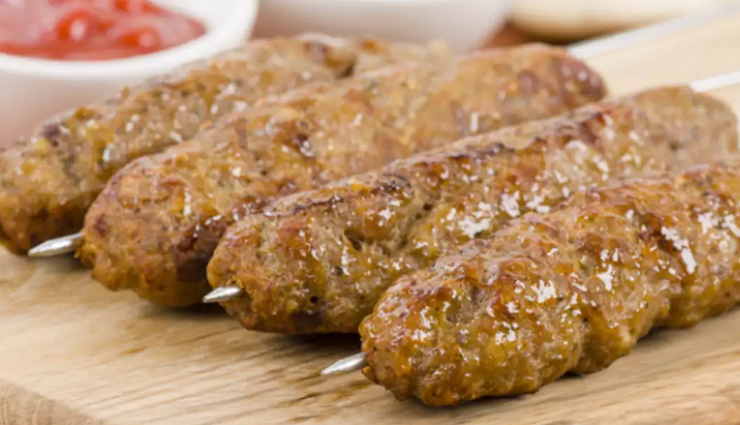
# Kakori Kebab
Kakori Kebab is a renowned and flavorful kebab delicacy that originates from the city of Kakori in Uttar Pradesh. Kakori Kebab dates back to the late 19th century during the reign of the Nawabs of Awadh. Legend has it that the kebab was created in the small town of Kakori, near Lucknow, in response to the nawab's request for a kebab that would be incredibly soft and melt in the mouth. The kebab was invented by Haji Murad Ali, a chef who took up the challenge and created this gastronomic masterpiece. Kakori Kebab is known for its refined flavors and aromatic spices. The combination of the tender meat, balanced spices, and the smoky infusion from the cooking process creates a symphony of flavors that is both rich and subtle. The kebabs have a mild heat, allowing the taste of the meat and spices to shine through.
Kakori Kebab is traditionally made using minced lamb meat, although variations with chicken or beef are also available. The meat is carefully selected and finely minced, often multiple times, to achieve an ultra-soft and velvety texture. It is mixed with a range of aromatic spices such as cardamom, cinnamon, cloves, mace, and nutmeg. The addition of papaya paste acts as a natural meat tenderizer, ensuring the kebabs are incredibly tender.
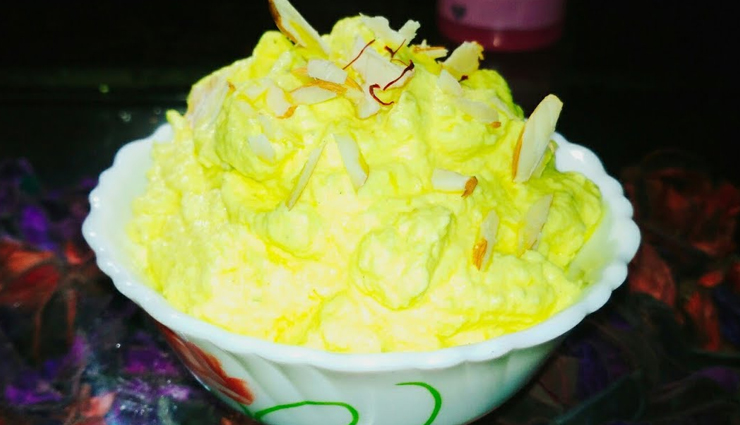
# Makhan Malai
Makhan Malai is a unique and delightful dessert that originates from the city of Lucknow in Uttar Pradesh. Also known as "Malaiyo" or "Daulat ki Chaat," it is a light and airy sweet dish that is popular during the winter months. Makhan Malai is renowned for its creamy texture, delicate flavors, and the way it simply melts in your mouth. Makhan Malai is made by churning milk and collecting the froth that forms on the surface. This froth is then collected and flavored with saffron, cardamom, and sometimes garnished with nuts such as pistachios or almonds. It is a time-consuming and delicate process that requires skill and patience.
The milk used to make Makhan Malai is traditionally sourced from the grazing lands around Lucknow, where the cattle feed on fresh green grass, lending a unique flavor to the dish. The combination of the natural sweetness of milk, the fragrance of saffron, and the warmth of cardamom gives Makhan Malai its distinct taste.
Makhan Malai is commonly available during the winter season, particularly in the early mornings when it is freshly prepared. Street vendors and local sweet shops in Lucknow specialize in serving this delicacy, attracting locals and tourists alike. It is considered a specialty of Lucknow's Awadhi cuisine and is enjoyed by people of all ages.
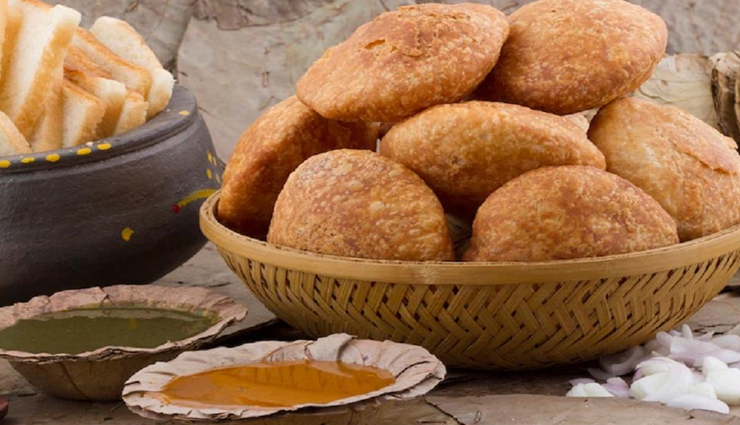
# Kachori with Sabzi
Kachori with Sabzi is a popular street food and breakfast dish that hails from Uttar Pradesh. It is a delicious and satisfying combination of flaky, deep-fried pastries known as kachoris, served with a flavorful vegetable curry or sabzi. This dish is enjoyed by locals and visitors alike and is known for its rich flavors and satisfying textures.
Kachori is a deep-fried pastry that is made with a dough of all-purpose flour or wheat flour, filled with a savory mixture. The filling typically consists of a combination of lentils (such as moong dal or urad dal), spices, and herbs. The dough is rolled out, filled with the stuffing, and then deep-fried until golden and crispy. The result is a crispy and flaky outer layer with a flavorful and spiced filling.
The accompanying sabzi is a vegetable curry that complements the kachori perfectly. The sabzi is typically made with a variety of seasonal vegetables, such as potatoes, peas, carrots, and cauliflower. These vegetables are cooked in a spiced tomato-onion base, along with a blend of aromatic spices. The sabzi has a rich and flavorful gravy that pairs well with the crispy kachori.
Kachori with Sabzi is commonly served as a breakfast item or as an evening snack. The kachoris are usually served hot, straight from the frying pan, to retain their crispiness. They are accompanied by a generous serving of the vegetable sabzi, allowing the flavors to meld together. The dish is often garnished with fresh coriander leaves, chopped onions, and a drizzle of tangy tamarind chutney or spicy green chutney for added flavor.





